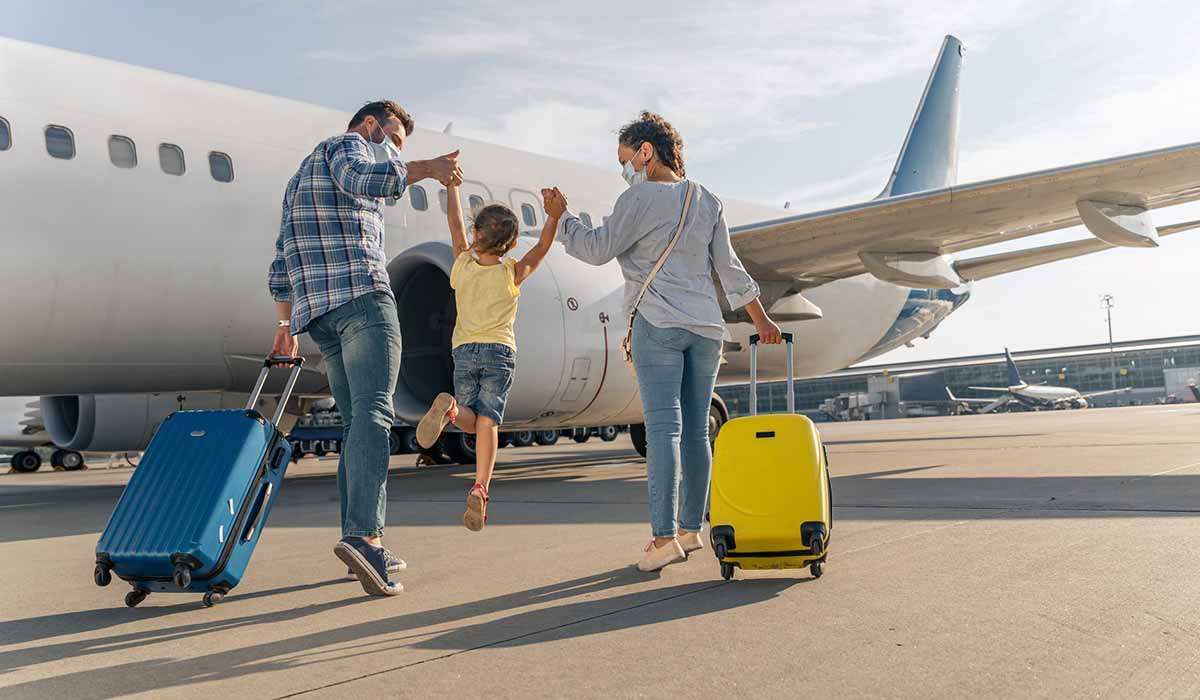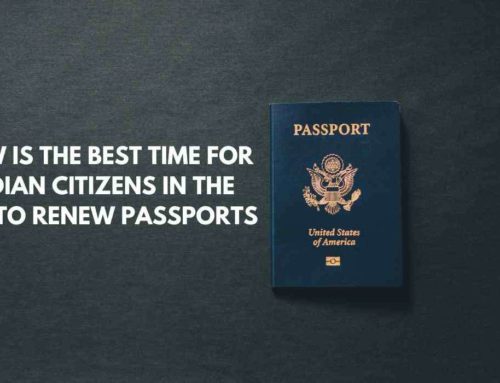1. Plan Ahead and Book in Advance
One of the biggest mistakes travelers make is failing to plan in advance. It might seem adventurous to book a flight on a whim or find accommodations on arrival, but doing so can be financially disadvantageous. In North America, flights and hotels can get booked quickly, especially in peak seasons like summer or around holidays.
Why Book Early?
- Cheaper Flights: Airlines often release their best fares many months in advance. Use fare comparison websites and apps to track prices, and consider setting alerts for specific routes.
- Accommodation Deals: Booking sites often offer ‘early bird’ promotions. These can come with free breakfasts, complimentary spa services, or discounted rates.
- Rental Cars: If you’re planning a road trip, rental cars are more affordable when booked ahead of time. This is particularly relevant in remote locations where availability can be limited.
Tools to Use
- Air India: For flights
- ogofly.com : For accommodations
- AutoSlash: For car rentals
By planning and booking in advance, you’ll have a better selection of affordable options, allowing you to allocate funds for other experiences.
2. Be Flexible with Your Travel Dates
Flexibility with your travel dates can significantly reduce your expenses. In North America, certain times are notoriously expensive due to high demand, like Christmas, Thanksgiving, and the Fourth of July in the U.S. Canada’s peak times often include Canada Day and Thanksgiving as well.
The Off-Season Advantage:
- Less Crowded: Major attractions like national parks or theme parks are less crowded.
- Cheaper Prices: Flights and accommodations are generally more affordable.
Weekday vs. Weekend:
Weekends are often pricier, so if possible, plan longer stays that run through weekdays.
Tools to Use:
- Google Flights: This allows you to view a calendar of the cheapest days to fly.
- HotelTonight: For last-minute hotel deals, especially when you’re flexible with dates.
By choosing to travel in off-peak times, you’re likely to save hundreds of dollars that can be better spent on experiences.
3. Utilize Public Transport
While road trips are a quintessential North American experience, they may not always be the most budget-friendly option, especially with fluctuating fuel prices. Public transport can often be a more economical choice.
Advantages:
- Budget-Friendly: Monthly passes or even weekly tourist passes can offer unlimited travel for a set price.
- Eco-Friendly: Lower carbon footprint compared to driving a car.
Specifics by City:
- New York: A MetroCard can give you unlimited subway and bus rides.
- San Francisco: The Muni Passport offers unlimited rides on cable cars, light trains, and buses.
- Toronto: The TTC day pass is great for tourists.
Tools to Use:
- Citymapper: To plan your routes via public transport.
- Local Transit Apps: Many cities have their own apps for public transit information.
4. Consider Alternative Accommodations
Hotels can offer luxurious comfort, but they also come with a high price tag. In North America, especially in touristy cities like New York, San Francisco, or Vancouver, hotel prices can skyrocket. But, luckily, there are alternatives.
Why Choose Alternative Accommodations?
- Budget-Friendly: Options like hostels or guesthouses can be much cheaper than hotels.
- Local Experience: Staying in a local neighborhood through Airbnb or Couchsurfing can provide a more authentic experience.
Types of Alternative Accommodations:
- Hostels: Ideal for young or solo travelers. Websites like Hostelworld can help you find the best deals.
- Airbnb: Good for groups or families and offers the comfort of a home.
- Couchsurfing: It’s free, but it’s best suited for solo or young travelers and requires a good profile and reviews.
Tools to Use:
- Airbnb App: For vetted homes and apartments.
- Hostelworld: For hostel ratings and bookings.
By opting for alternative accommodations, you not only save money but also gain a unique experience that conventional hotels can’t offer.
5. Use City Passes and Tourist Cards
When you’re exploring major North American cities, admission fees to attractions can add up. One excellent way to save is by purchasing a city pass or a tourist card.
What Are City Passes?
- Bundled Attractions: These passes often include a set number of attractions for a reduced price.
- Skip the Line: Many passes offer fast-track entry.
Examples:
- New York CityPASS: This gives you entry to six major attractions, including the Statue of Liberty and Empire State Building.
- Go Los Angeles Card: Access to over 30 attractions, including Universal Studios.
Pros and Cons:
- Pros: Major savings, ease of use, and often include fast-track privileges.
- Cons: May force you to visit attractions you are not interested in just to ‘get your money’s worth’.
Tools to Use:
- City-specific Tourism Websites: These often offer downloadable tourist cards.
- Viator: For purchasing city passes online.
City passes can provide significant discounts and are well worth it if you plan to visit most of the included attractions.
6. Cook Your Own Meals
Food can be a significant part of your travel budget, especially in gourmet destinations like San Francisco, New Orleans, or Quebec City. However, you can cut costs by cooking your own meals.
Why Cook?
- Savings: Even a basic meal at a restaurant can cost $10-$20 per person. Multiply that by three meals a day, and the costs add up.
- Health: You control the ingredients, making it easier to eat healthily.
How to Cook While Traveling:
- Grocery Stores: Use Google Maps to find the closest grocery stores and stock up on essentials.
- Farmers’ Markets: For fresh produce and local goods.
- Hostel/Airbnb Kitchens: Make sure your accommodation has cooking facilities.
Tools to Use:
- Meal Planning Apps: Like Mealime or Yummly for simple recipes.
- Local Food Blogs: For recipes that allow you to experiment with local cuisine.
Cooking doesn’t mean you should skip local cuisine. Instead, it offers a balance between enjoying local dishes and maintaining your budget.
7. Free Walking Tours
Exploring a new city or destination in North America doesn’t have to break the bank. One of the most economical ways to get acquainted with a new place is through free walking tours.
Why Opt for Free Walking Tours?
- Educational: These tours are often led by local guides who offer invaluable insights into the history and culture.
- Social: It’s a great way to meet other travelers.
- Flexible Budget: Most free tours operate on a tip-based model, allowing you to pay what you can afford.
Popular Destinations with Free Tours:
- Washington, D.C.: The National Mall has several free monuments and museums, and many organizations offer free tours.
- San Francisco: Free walking tours to explore neighborhoods like Chinatown and Fisherman’s Wharf.
- Toronto: Free walking tours to explore the historical and modern aspects of the city.
Tools to Use:
- TripAdvisor and Yelp: To find highly-rated free walking tours.
- Facebook Groups: Look for travel groups specific to your destination that might offer free tours.
Remember to tip your guide according to what you can afford and what you think the tour was worth.
8. Use Travel Apps
In today’s digital age, a smartphone can be one of your best travel companions, especially when looking to save money in North America.
Types of Travel Apps:
- Budget Tracking: Apps like Trail Wallet can help you keep track of your daily expenses.
- Flight and Hotel Booking: Skyscanner, Kayak, and HotelTonight can assist in finding the best deals.
- Public Transportation: Apps like Citymapper or local public transit apps for navigation.
Data Roaming vs. Local SIM:
- Buying a local SIM card can be cheaper than incurring roaming charges, and it ensures that you can use these apps on the go.
Tools to Use:
- Google Maps: For offline maps.
- XE Currency: For currency conversion.
By utilizing a variety of travel apps, you can simplify your trip and save money in multiple areas—from lodging and transport to food and entertainment.
9. Stay Connected for Free
Staying connected while traveling in North America doesn’t mean you have to rack up a large bill. Many cities offer free Wi-Fi hotspots, and there are numerous ways to communicate without spending a dime.
How to Stay Connected:
- Free Wi-Fi: Cafés, libraries, and public spaces often offer free Wi-Fi.
- Messaging Apps: Use WhatsApp or Messenger over Wi-Fi to send messages or make calls.
What to Be Cautious Of:
- Security: Public Wi-Fi networks are often less secure, so avoid accessing sensitive information.
Tools to Use:
- VPN: Using a Virtual Private Network can protect your data.
- Wi-Fi Finder Apps: Apps that locate nearby Wi-Fi hotspots.
Remember to disable data roaming to avoid surprise charges and to rely on free Wi-Fi whenever possible.
10. Don’t Underestimate the Value of Research
While it may seem tedious, conducting extensive research before your trip can save you a surprising amount of money.
Why Research is Important:
- Costs: Knowing the average costs for meals, transportation, and attractions can help you budget accurately.
- Local Tips: Online forums and social media can provide tips that guidebooks don’t.
Where to Research:
- Travel Blogs: Look for articles specifically geared toward budget travel in your chosen destination.
- Social Media: Platforms like Instagram and Pinterest can offer travel inspiration, while Twitter and Facebook can provide real-time advice.
Tools to Use:
- Google Alerts: Set up alerts for your destination to receive the latest news and tips.
- Reddit: Subreddits like r/travel or city-specific forums can be a wealth of information.
Thorough research will help you discover local secrets, avoid tourist traps, and make the most of your travel budget.
























